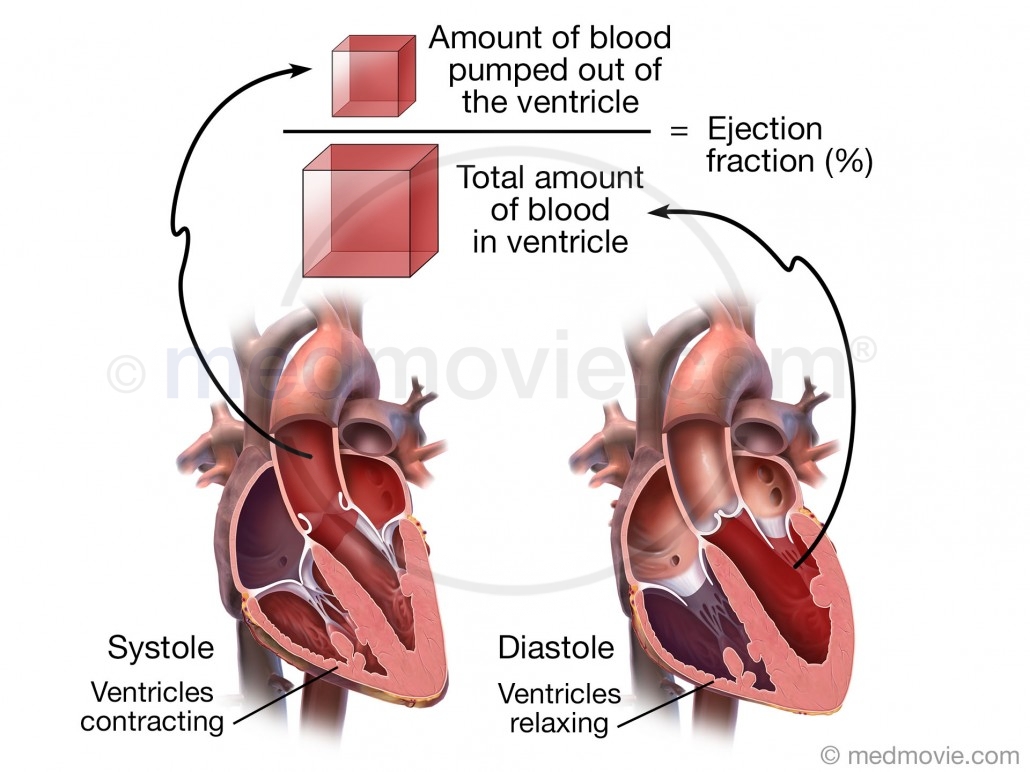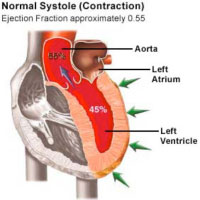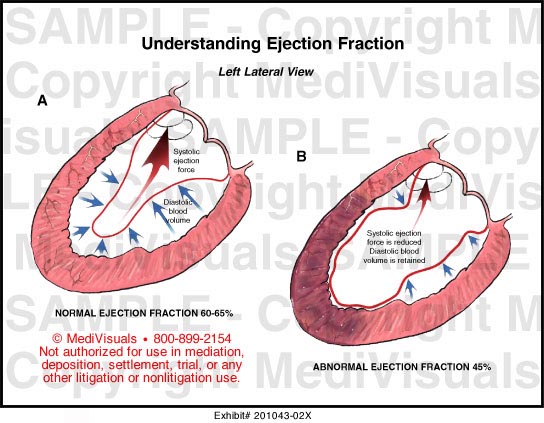Ejection fraction
Ejection fraction (EF) or ejection fraction is a measure of heart function. You mean the proportion of the heart in one contraction blood, ie the stroke volume ( SV), relative to the total blood volume of the ventricle, so the End-Diastolic Volume ( EDV):
Here, the stroke volume is the difference between end-diastolic and end systolic volume ( ESV ):
The ejection fraction can be measured using different examination methods, in descending order of frequency:
- Echocardiography
- Cardiac catheterization
- Magnetic resonance imaging
- Myocardial scintigraphy or radionuclide ventriculography or Binnenraumszintigrafie.
In clinical practice, the estimation of the ejection fraction is often according to the visual impression; this is considered with subjectively normal pump function than adequate. In cases of impaired pumping function of a quantitative determination using the slice summation method to Simpson should be done; quantification with M-mode according pond wood is considered to be too inaccurate.
Reference values
The European and the American Society of Echocardiography specify matching reference values for the assessment of the global pump function on the basis of ejection fraction.
Clinical Significance
A reduced ejection fraction is used as of objective parameters in addition to the clinical symptoms for the diagnosis of heart failure. In asymptomatic patients, a defined EF < 35-40 %, the presence of left ventricular dysfunction ( NYHA I) and thus the need for a medical heart failure therapy with an ACE inhibitor.
In simultaneous enlargement of the ventricles ( dilatation) and disruption of the spread of excitation ( QRS > 120 ms) or after myocardial infarction <35 % at EF is the implantation of a CRT system indexed with defibrillator function.
A reduced ejection fraction applies in addition to other parameters such as clinical symptoms and laboratory markers as an indicator of poor prognosis in heart failure.










